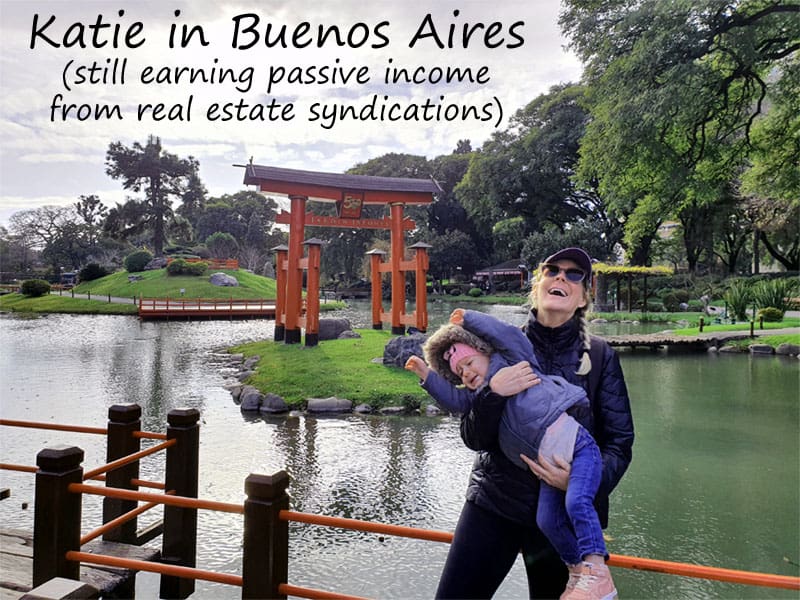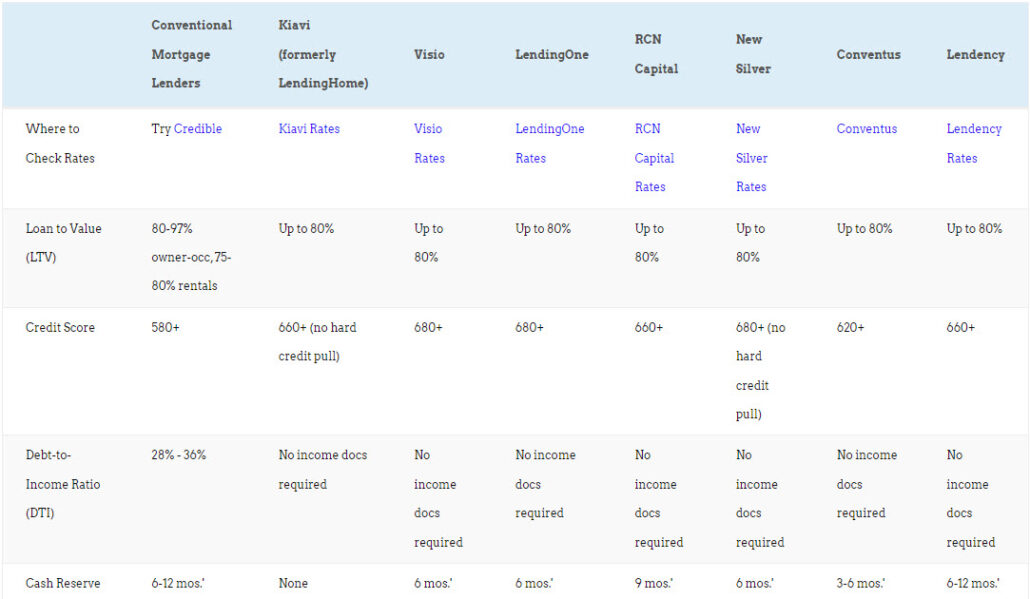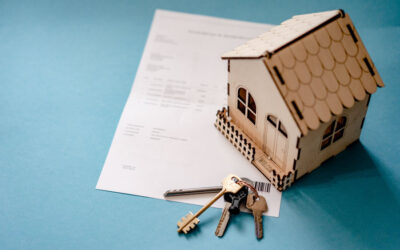
For most real estate investors, coming up with the next down payment for a rental property is the greatest barrier to buying. Nowhere is the adage “It takes money to make money” more obvious than in real estate investing!
In fact, when we’ve polled in our Landlords & Real Estate Investors’ Hub on Facebook, the most common challenge to investing is always “pulling together the next down payment for an investment property.”
We hear you loud and clear. So we’ve put together an exhaustive guide on exactly how you can beg, borrow, save, and otherwise assemble your required down payment for a rental property.
How Much Do I Need for a Down Payment on a Rental Property?
Like most questions worth asking, the answer to this one is “It depends.” Specifically, it depends on the type of financing you’re borrowing, it depends on your credit history, and it depends on how risky you look to lenders.
But that’s not much of an answer, so here’s a better one: between 15-30% of the purchase price of your next investment property (unless you house hack — more on that later). Where your down payment will fall in that range depends on what kind of loan you use to buy your next investment property.
Conventional Mortgages
On the lower end of the down payment spectrum lie conventional mortgages, usually requiring a minimum down payment of 20% for investment properties. But conventional loans come with far more rules than portfolio loans or commercial loans. Expect high credit, income, and cash reserve requirements among conventional lenders. And they take longer to close, typically 30-60 days.
Also remember that you will need to pay for private mortgage insurance if you take out a conventional mortgage with less than 20% down.
As a final note on conventional lenders, bear in mind they impose strict rules on the source of your down payment. They want it to come from your own savings, in cash, and they usually require that cash to be “seasoned,” meaning in your bank account for at least two months prior to closing.
That means they won’t let you use many of the options on the list below, because normally they don’t allow any part of the down payment to be borrowed from someone else. However they work great for house hacking — compare mortgage rates and fees on Credible.
Portfolio Loans
The alternative to conventional mortgages is portfolio loans. A portfolio loan is a loan kept in-house by the lender, rather than bundled and sold to a large mortgage servicing company. Examples include local community banks, and online investment property lenders like LendingOne, Visio, or Kiavi.
These loans typically require 15-30% down, settle within 14-30 days, and tend to be more collateral-oriented in their underwriting. In other words, they carefully scrutinize your deal and the property itself, to make sure they agree that it’s a good deal, but have fewer requirements regarding your income.
Many lenders, such as LendingOne and Visio, don’t require income documentation at all!
One other perk is that many portfolio lenders don’t impose seasoning requirements, and don’t ban you from borrowing the down payment. Their attitude is more laissez-faire toward the down payment for investment property loans, more akin to “We’re not paying it, so you’re on your own to pull it together.”
The downside for this greater flexibility? Portfolio lenders tend to charge slightly higher interest rates and up-front fees.
While these are the two main sources of loans for rental properties, they’re not the only ones. Here are some more rental property financing ideas to consider, before settling on a lender.
Portfolio lenders tend to be relatively fast and easy to work with, as they require far less documentation than conventional mortgage lenders. Here’s a quick demonstration of me submitting a loan application to LendingOne in under a minute:
Cash Reserves, Closing Costs, & More
Regardless of whether you borrow from a conventional lender or a portfolio lender, you still need cash reserves.
Lenders require that you have enough cash set aside at settlement to cover a certain number of months’ mortgage payments. The typical range is one-to-six months’ worth of payments.
Where it gets hairy is that lenders often require cash reserves for all of your mortgages — not just the new loan you’re borrowing.
And, of course, you’ll need cash to pay for closing costs. That includes between $1,000-2,000 for title-related expenses, plus taxes, insurance, and lender fees, which will lay on thousands more dollars. No one said borrowing a mortgage was cheap!
The upshot is that you need a lot more cash than just a rental property down payment. Keep these other cash requirements in mind as you run the numbers on financing options.
17 Ways to Come Up with a Down Payment for an Investment Property
Not scared away yet? Good, because despite the high cash requirements for buying investment properties, you have plenty of options to come up with the cash for a down payment on a rental property. You may even be able to buy your next rental property with no money down!
Before we dive in, it’s worth pausing to note that the best source of funds for a down payment was, is, and always will be cash from your savings. When you borrow a down payment from someone else, you leave yourself vulnerable to overleverage, to narrow cash flow margins or even negative returns, and to possible rate hikes or called loans.
This is why we’re so big on boosting your savings rate and cutting your spending, and even going so far as living on half your income. The more of your own savings and cash you can invest with, the better position you’re in to earn high returns from your rental properties.
All right, enough proselytizing, let’s dive into some alternative ideas for coming up with the down payment for an investment property!
1. Home Equity
Have some equity in your primary residence?
One of the most effective ways to borrow money for a down payment on an investment property is to take out a home equity line of credit (HELOC) against your primary residence. It’s relatively affordable, it’s flexible, and if you have a lot of equity, you can borrow a lot of money!
HELOCs can be fixed-interest or variable, based on the prime rate. They typically have a 10-15 year draw period, during which borrowers can transfer funds to the bank account at any time. You typically pay interest only on the credit balance, and don’t have to pay any money toward principal each month.
After that, there’s a 15-20 year repayment period, when the borrower can no longer pull money from the line of credit, and must make regular monthly payments to pay off the balance.
Many real estate investors use a HELOC to cover the initial down payment or the renovation costs when they buy a new property. After renovating, they then refinance to pull some cash back out and pay off their HELOC balance, and then go out and do it all over again.
Alternatively, you can use a HELOC to fix and flip a house, rather than keeping it as a rental.
You can also tap your equity with a home equity loan. Usually a second mortgage, home equity loans could theoretically be a first mortgage if you own your home free and clear. But home equity loans don’t offer the same flexibility as HELOCs, as standard mortgage loans with a fixed repayment schedule.
As a final note, keep in mind that conventional lenders won’t like you using HELOCs to come up with the down payment for an investment property. First, they don’t want to see any part of the down payment borrowed, and second, it will add more debt to your debt-to-income ratio (DTI).
It may also lower your credit temporarily, like any other new debt.
2. Rental Equity Line of Credit (“RELOC”)
All right, so “RELOC” may not be a term, but it’s still a thing. Landlords can take out HELOCs against rental properties, rather than their homes, if they have enough equity.
As with mortgages, expect the interest rates and fees to be higher on credit lines against an investment property compared to a HELOC. That’s because the risk to lenders is higher, as borrowers are more likely to default on investment property loans than on their home loans.
You can also expect the maximum LTV (loan to value ratio) to be lower, with RELOCs compared to HELOCs. That means that lenders will lend you less of the property’s total value, again because their risk is higher.
Remember that when you borrow money to invest, you need to make sure you’ll earn a higher return on investment than what you’re paying in interest. That includes both your investment property mortgage and any loans for the down payment. Run the cash flow numbers in our free rental property calculator to forecast returns, monthly cash flow, and operating expenses.
 3. Cross-Collateralization
3. Cross-Collateralization
Another option if you have equity in your home or other rental properties is cross-collateralization.
Wait, cross-collata-what?
Also known as a blanket mortgage, you can offer to let your new lender put an extra lien against your home or a different rental property, as additional collateral. Say you apply for a loan to buy a new rental property, and they require a 20% down payment (plus closing costs, plus cash reserves). You don’t have enough cash, but let’s say you do have another property with $100,000 in equity in it.
So, you tell the lender about your equity, and they agree to use that other property as additional collateral, and waive your down payment requirement. They now have two properties secured for one loan, and feel confident that even if you default, they can recover their money by foreclosing on both of your properties.
Which, of course, raises your level of risk. If you default on one loan, you lose two properties. Borrower beware.
4. Your 401(k)
Thinking about raiding your nest egg? It gets tricky when you borrow money from your retirement accounts to cover a rental property down payment, beware.
But here are the basics. First, if you know — with 100% certainty — that you will be able to pay the money back in under 60 days, you can withdraw the money from your 401(k). As long as you return it within 60 days, it doesn’t count as a distribution, and you don’t suffer the IRS’s wrath with penalties and back taxes owed and lots of tears.
Since that’s a risky play, you have another option: you can borrow the money from your 401(k) administrator. Sure, it’s technically your own money that you’re borrowing against, but until you reach 59 ½, you don’t have access without the aforementioned penalties. But the good news is that 401(k) loans are cheap, since you’re basically borrowing money from your future self. Money that, incidentally, is already in your account.
You can typically borrow up to $50,000, or up to 50% of your 401(k) balance, whichever is lower.
5. Your Roth IRA
Like 401(k)s, you can pull money out of an IRA for up to 60 days penalty-free, as long as you put it back promptly. Which is just as risky with IRAs as it is with 401(k)s.
Another option with IRAs is to use a self-directed IRA to buy investment properties. With that said, it requires you to set up a self-directed IRA with a custodian, which involves some work (and costs).
Alternatively, you can pull contributions back out of your Roth IRA any time, penalty-free. But not earnings — any gains in your Roth IRA must stay put until you’re 59 ½, or you’ll face IRS penalties.
One final option is to pull money out of your account to buy a primary residence for house hacking (more on that momentarily). The rules are different in Roth IRAs when you pull money out to buy a home:
- It must be your first home,
- Your Roth IRA must have been open for at least five years,
- The funds must be used directly toward the home purchase, and
- You can’t withdraw more than $10,000.
Read up on more details for using retirement accounts to buy investment properties before trying it at home!
6. House Hack to Slash Your Down Payment (and Live for Free)
House hacking involves buying a home to live in, and finding a way to have someone else pay money put toward your mortgage.
There are plenty of approaches to house hacking, from buying a small multifamily and renting out the other units, to renting out bedrooms in a single-family, to living there for a year before moving out and converting it into a rental. Deni has found even more ingenious ways to house hack, by bringing in foreign exchange students and by renting out storage space in her house!
Here’s a quick case study on how one young man with no real estate experience house hacked a duplex and now lives for free.
What does all this have to do with down payments? Simple: the down payment requirements for primary residences are far lower than for investment properties.
For example, instead of paying 15-30% for a rental property down payment, FHA borrowers with a minimum credit score of 580 put down just 3.5%. And no, you aren’t limited to single-family homes — FHA, USDA, and VA loans let you buy multifamily properties with up to four units.
Even conventional mortgage giants Fannie Mae and Freddie Mac now offer loan programs with as little as 3% down. Far, far less than you would need to come with for a minimum down payment on an investment property.
You can even take advantage of 0% down programs like NACA loans, VA loans, and USDA loans.
Plus, you can use the rental income from the other units to help you qualify for the mortgage. Rental income that hopefully ends up covering your entire mortgage payment. Definitely a win-win!
Check out Credible to compare today’s interest rates. If you want more tips on house hacking and other ways to cut your expenses, Deni and I chat about ways to accelerate your savings for a down payment on an investment property here:
7. Owner Financing
Why not ask the seller to lend you the down payment?
Seller-held second mortgages are common, although expect the loan term to be significantly shorter than for traditional mortgages. No seller wants to hold a loan for 30 years; they want their money sooner rather than later.
But as with everything else in real estate investing, owner financing is negotiable. That goes for everything from the loan term to the interest rate to any up-front fees. Perhaps you offer to pay higher interest for a longer repayment term, or negotiate a 30-year amortization period with a three-year balloon.
In fact, if you’re planning on refinancing or selling the property within the next few years, a balloon payment can be an excellent compromise between you and the seller. In a balloon note, the remaining balance of the loan becomes due by a certain day; in the example above, your monthly payments are based on a 30-year amortization schedule, but you must pay the entire balance of the loan within three years, through either refinancing or selling the property.
Your monthly mortgage payments remain low, but the seller still gets their money within a few years like a shorter term loan.
8. Gap Funding
There are companies that specialize in lending real estate investors their down payment for investment properties.
Known as gap lenders, they either charge high interest and fees, or they require an ownership stake in your deal. That’s the price of investing in real estate with no money down.
And it makes sense: gap lenders take on enormous risk, lending you the down payment. They take second lien position behind your main lender, and they’re effectively lending 100% LTV.
Still, a piece of something is better than all of nothing. If you have no other way to close a great deal, gap funding can make sense. Just make sure the combined monthly debt payments leave you with positive cash flow if you’re buying a rental property — the last thing you want is to lose money each month.
Try Gap Funding Solutions to get a sense for pricing and how gap lenders structure these deals.
9. Loans from Friends & Family
Like so many other options on this list, you can’t borrow money for a down payment if you’re using a conventional loan. But portfolio lenders usually allow it.
Your parents, siblings, aunts, uncles, friends, grandparents are all viable sources to borrow from, to help you accumulate the down payment for your next investment property.
These private lenders probably won’t rake you over the coals on interest or fees either. Probably. As with seller financing, all terms are negotiable. Your friends and family probably won’t lend you a 30-year loan, but you can arrange interest-only loans or other favorable loan terms.
One other perk: the debt won’t appear on your credit report, and your other lender may not include it when calculating your DTI. If they bother calculating it at all, which many portfolio lenders don’t.
Just make sure you confirm that the portfolio lender you’re using allows it, before begging your family and friends for a private loan!
10. Co-Investment from Friends & Family
A loan isn’t the only option, when raising money from friends and family. They might want in on the action, as a partner.
If your friends and family balk at the idea of a loan, ask if they want to go in on an investment property with you. You’ll have to negotiate terms: who’s providing how much of the down payment for the rental property, who’s overseeing contractors and renovations (if any), who’s managing the property and tenants.
Most of all, agree on an exit strategy. Will one partner buy the other one out at a certain point? For how much? Or will you eventually sell the property on the market to cash out? When?
The only wrong exit strategy is not having one, and leaving the partnership open-ended. Because inevitably the day comes when one partner wants to cash out, and the other wants to keep holding the property.
11. Sell Your Old Stuff
I just did this myself, and raised around $700. Not enough to cover a down payment of course, but a good start toward one.
Of course, parting with your old belongings is more difficult than it sounds. My wife Katie pushed me to sell my kegerator, and the whole time I was thinking “But what if I want to brew beer again one day?”
(Can you tell I’m still a little sad about it?)
But the truth is that it’s liberating to get rid of the physical “stuff” cluttering up your home and life. Brad Pitt said it well in Fight Club: “The things you own end up owning you.”
The trick is maintaining the discipline not to go buy more stuff to replace the stuff you got rid of. Breaking the cycle of consumerism is a good first step, if you want to live on half your income and put more money toward investments and early retirement!
12. Wholesale Properties to Other Investors
Familiar with the business model of wholesaling real estate?
The premise is simple: you find good deals, then pass them along to other investors — for a margin. For example, you find a property worth $75,000 as-is (and let’s say $150,000 after renovations), that the owner is willing to sell for $50,000. You put it under contract for $50,000, and turn around and sell the contract to another investor for $60,000.
You get a $10,000 margin without ever having to take title to the property, the seller gets the quick sale that they want for $50,000, and your buyer gets a $75,000 property for $60,000. It’s a win for everyone.
But wholesaling requires two critical skill sets: finding excellent off-market deals, and building a buyer’s list of real estate investors to step in and take over the contracts. Far too many novice real estate investors think of wholesaling as an easy way to get started, because it doesn’t require much capital.
Wholesaling is labor-intensive however. It’s a lot of work to find these deals good enough to wholesale for a decent margin, and to build a reliable buyer’s list. The good news? These skills cross over to actual real estate investing quite well, and will serve you once you start investing for yourself.
Check out our review of Propstream’s real estate investing tools, which make it much easier to find off-market deals.
13. Fix & Flip a House
Another way to raise capital for the down payment needed for a rental property is by flipping a house or two before buying a long-term rental.
“But wait a second! It still takes a down payment to buy a property to flip!”
It does. But not necessarily as much of one; you might flip cheaper properties, to accrue the down payment for a larger rental property. And some fix-and-flip lenders (like LendingOne) cover 90% of purchase price if the property appraises well, leaving you with a smaller down payment for a flip.
Of course, you’ll also need the money to begin repairs. Even though lenders like LendingOne and Kiavi cover 100% of your renovation costs, you still need to put the money up initially for each draw, before being reimbursed by the lender (based on the draw schedule).
Hard money loans are also a useful tool for flips. Read up on the pros, cons, and uses of hard money loans here.
14. Refinance After Renovating: BRRRR
The BRRRR method is an acronym for buy, renovate, rent, refinance, rinse and repeat.
When you refinance after renovating a property, you can pull your initial cash back out, to use as the down payment for your next rental property. That means you only really need to save up the first down payment, because you can keep using the same cash over and over to buy new properties.
Except with each property you add to your portfolio, you also add to your monthly income. That helps you snowball your income to put more and more money into each successive deal, helping you expand into larger, more lucrative investment properties.
I initially built my rental portfolio this way. It’s a classic strategy for a reason!
You can use lenders like LendingOne, Kiavi, or a hard money lender for the initial purchase and renovation, and then refinance for a long-term mortgage with Kiavi, Visio, or other long-term rental lenders. Get a rate quote and down payment quote from Lendency right here:
15. Credit Cards & Business Lines of Credit
All right, so pulling cash from credit cards is among the riskier tactics on this list. But it’s still an option.
The advantages to drawing on credit cards for your down payment include speed (it’s instantaneous) and flexibility (you can repay it as quickly or slowly as you like). The enormous, hulking, elephant-in-the-room disadvantage? It’s expensive.
Personal credit cards typically charge three or four “points,” or percent up front in the form of a cash advance fee. Then there’s the interest, which typically falls in the 16-24% range.
That’s a lot.
But no one says you have to use personal credit cards. Instead, use a business credit service like Fund & Grow to open $100,000-$250,000 in combined business credit cards and lines, which you qualify for as a real estate investor. They’ll find you cards with 0% introductory APR for the first 12-18 months, saving you money on interest. Then they’ll show you how to pay title companies with your business credit cards, to avoid paying a cash advance fee.
Keep in mind that credit cards are not a viable option if you’re borrowing a conventional mortgage, since it involves borrowing money to cover the down payment.
Credit cards can be a fast, flexible source for funding a down payment on an investment property. Here’s some further reading on how to use credit cards to buy real estate. I’ve done it myself, and it worked out pretty well, actually.
16. Pay Off Your Credit Card Debt
Swinging in the opposite direction, you can pay off your credit card debt to free up more of your monthly income for savings and investments.
As mentioned above, credit card debt is expensive. Too expensive — if you have credit card debt, it should be your first priority, as you’re not likely to earn a higher return on your investments than what you’re paying in interest to credit card companies.
If you have credit card debt, pay that off before investing in real estate or stocks or anything else. Once you’ve gotten that monkey off your back, you can start funneling money aggressively into saving a minimum down payment for an investment property.
17. Personal Loans
Personal loans are also expensive, with high interest rates and fees. But they do offer another loan option for borrowing a rental property down payment.
Again, be careful about winding up cash flow-negative on your rental properties. Personal loans could help you bridge the gap in order to buy a flip or BRRRR deal you wouldn’t have been able to buy otherwise though.
Final Word
Real estate investors have plenty of options for raising the minimum down payment required for an investment property.
And while I encourage you to be creative, I also caution you not to overextend yourself. Leverage is an incredible benefit to real estate investing, but it comes with its own risks.
Early in my career I bought too many rental properties, too fast. By the time I realized what I’d done, I’d already multiplied my mistake by buying ten properties, all leveraged to the hilt, and with negative cash flow.
Which is precisely why we spend so much time focusing on how to calculate real estate cash flow.
Feel free to utilize and combine the tactics above as needed to raise your next down payment for a rental property loan. Just be careful to run your cash flow numbers beforehand, and to make sure you’re not biting off more than you can afford to chew.♦
How have you raised capital for a down payment on an investment property? What are your favorite rental property down payment tactics?
More Real Estate Investing Tips & Tricks
About the Author

G. Brian Davis is a real estate investor and cofounder of SparkRental who spends 10 months of the year in South America. His mission: to help 5,000 people reach financial independence with passive income from real estate. If you want to be one of them, join Brian and Deni for a free class on How to Earn 15-30% on Fractional Real Estate Investments.



























Very creative! Fun list, going to try one or two of these to source the down payment for my next rental property.
Thanks Cara, keep us posted on how they work out!
This is exactly what I struggle with, and I feel like most people say “just save up the money.” Thanks for taking a different approach!
Glad to hear it was useful Theo! Thanks for the comment 🙂
Okay, I’m curious about number 15. How do you “pull your initial cash back out?” We bought a house 5 years ago in rough shape. According to Zillow (I know, know that accurate) it has increased in value $70,000 since then. I’ve also turned the cement wall basement into a modern studio apartment. If Zillow is correct, then right now we have around $100,000 in equity in our home. I really want to get a rental property but I also have the skills to flip a house so I’m not sure what the best solution is right now.
For the cheapest multi-family homes in my area I can currently can’t afford any down payment unless I borrow money. I can get 5% from a 401k but trying to figure out the best way to get 20% down. You said you got started with #15…so do you have more details on that?
Perhaps doing a cash out refinancing on our current home would be a good option for buying our first rental property? Unfortunately I think we have a very low interest right right now (like 3.1%) and no PMI so I’m nervous about doing any refinancing. I just really want that first rental property and it’s hard to have the patience to save up enough to get it!
The BRRRR method still requires cash for the initial down payment, but you can pull that money back out by refinancing after you finish the renovation. Think of it as flipping a property, but instead of selling, you refinance and keep it as a rental.
We have a complete breakdown of how the BRRRR method works here: https://sparkrental.com/brrrr-method-real-estate-leverage/.
The hardest part is just putting together that first down payment!
Well written and to the point. I appreciate the detail in this article!
Thanks Gelt!
Great post! All info are very interesting and helpful to real estate investors. Thanks for this blog.
Thanks Team Rueth, much appreciated!
Thank you for sharing! Great creative ways to get your down payment.
Thanks Yesi, glad it was helpful for you!
I own 2 rental properties with clear title on both. One property worth 240K the other 120K.
I would like to rehab the 240K property and sell our keep as rental.
What loan would you recommend for cash to do the rehab?
Hi James, in a perfect world, you’d use unsecured business credit lines and cards through Fund & Grow (more details in the Rotating Lines of Credit section above). You could also use a secured HELOC, whether against your home or one of the properties. That way you don’t have to refinance.
Keep us posted!
Thank you for this. My boyfriend’s boss put in offers for 9 houses she will use for rentals. I was wondering how long it would take to close as I was told multiple things. This cleared it up for me.
Glad to hear it was helpful Ronnah!
“House hacking” …. now theres a term for it! I would rent enormous homes with multiple floors and rooms and rent them all to exchange students 15 years ago! Saved enough to buy 2 rental properties AND I lived rent free. Not bad for a single parent in a ridiculously expensive city! Great blog thanks for sharing.
Thanks Jenn, and so glad to hear you’ve had success with house hacking!
Wow, Jenn – that is impressive! Were these college students? I currently do this for high school students but what a great idea!
Thank you for sharing! Great ways to get your down payment.
Thanks Colleen!
Appreciate your blog post and great ideas how to down payment for property in various ways. Thank You!
Appreciate the comment!
I love this article particularly for how honest you have been. Thanks for sharing various method of down payment for rent property. Actually I am looking for rental property so, thanks for solving my problem.
Thanks for the comment 🙂
Thank you for this detailed information. This will be my first investment property and your assessment on the various methods for securing the down payment is extremely helpful. Thanks so much.
So glad to hear it was helpful Alexis! Please don’t hesitate to reach out about any other ways we can help 🙂
Great article, Brian! Being in the industry a long time…it was a great refresher.
Thanks Shawne, much appreciated!
https://selling-guide.fanniemae.com/Selling-Guide/Origination-thru-Closing/Subpart-B3-Underwriting-Borrowers/Chapter-B3-4-Asset-Assessment/Section-B3-4-3-Verification-of-Non-Depository-Assets/1032989771/B3-4-3-15-Borrowed-Funds-Secured-by-an-Asset-10-30-2009.htm
basically says you can use borrowed funds secured by real estate for down payments, closing costs, and reserves, so as long as the lender does not have an overlay that does not allow this, as long as you have equity in one property that a lender is willing to use to loan you money such as a HELOC, you can then use the proceeds of that loan for down payments, closing costs, and reserves when taking out a conventional mortgage on another property
Thanks for sharing Darrell!
Thanks G. Brian Davis for sharing, it will help many first time home buyers. Hiring a real estate agent will take care and perform all the formalities for you as well, ease out the process of buying.
True Lauren, and it doesn’t cost the buyer!
A short-term home equity loan uses the equity you have in your home to provide you with funds for a variety of purposes, whether you have an existing mortgage or own your home outright.
Very true Shiela!
Great tips to come up with the down payment on a rental property. 2022 is going to be my year!
Love it JJ!
My favorite tactic is to fix and flip houses periodically to come up with down payments for my rentals.
It’s a great model for funding your rentals, and it helps you snowball your passive income over time!
I read this article about how to come up with Down payment for investment property!
Very glad to hear it Marie-Anne 🙂